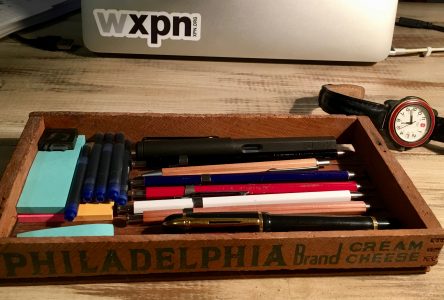Nicole Schlesinger

The idea of “forwarding” an idea, furthering it, deepening it, and somehow making it your own, as described in Rewriting, is personally relevant when applying it to Odell’s book. I think an important part of any reading is to digest the writer’s project and see if it makes sense when considering one’s own life. In the case of How to Do Nothing, this makes perfect sense.
I grew up in an affluent suburb of New York City that often seemed to value achievement over almost everything. While I realize how fortunate I am to have had a good education, excellent teachers, and a concerned and supportive community, too many adults and young people were obsessed with being busy, being involved in a million activities all supposedly for self-improvement. If a student was not playing sports, participating in a club, or being tutored after school he or she was often looked down upon. My classmates filled their calendar with all sorts of extracurricular activities that left them exhausted and overwhelmed. When homework obligations were added onto these busy schedules, stress levels rose even higher.
Adults were similarly focused on being “busy.” Many came from families where both parents worked outside the home, but they also loaded extra activities into their own already busy days. Being productive, being useful, improving oneself were goals that seemed to be driving forces for everyone. There was no time, and no tolerance, for just being. Being busy was prized and encouraged. I get stressed out just thinking about it!
This attitude goes against so much of what Odell states in her book, and I think this would be my personal forwarding of her message. Odell urges people to resist, and this is also relevant to me because in high school I resisted this atmosphere of being constantly busy and productive. Although I did not watch the birds, I used this metaphor as a way to be more aware of the physical world around me. I love being outside just for no other reason than to feel the sun or see the flowers. I won’t pretend to say that I meditated in a rose garden, listened deeply, or paid real attention to the different kinds of bugs in a watershed, but I do think I was able to stay more focused on other things instead of intentionally being too busy to observe them.
Odell quotes Gilles Delueze in describing the abundance of pointless talk that seems to have little meaning. She points out the necessity for quiet, for the peacefulness to be alone and to be silent. This is also something I think is important to forward. I think the world seems full of noisy chatter and needless talk. Odell recalls how she started coming to the Rose Garden every day after the Presidential Election in 2016. Needing time to think, reflect and be alone with her thoughts, Odell also seems like she wanted to get away from the noisy world of political arguments, constant discord, and the angry accusations that seemed to flood the national scene. I can totally relate to this because I lose patience with people who feel some compulsion to fill the air with noise and empty words. This is not to say that I think my ideas are better, but like those who feel some need to stay busy, there are many people I know who feel they must always talk. Why are people so afraid of silence? When I ask this question to my friends, they often answer that being quiet is socially awkward and inappropriate. Again, as Odell states, silence is the way to obtain deep listening; to hear birdsong, and the message the birds want to communicate. In society’s need to feel useful and productive, people also seem to feel like it is necessary to fill any silence with useless words. “What if we spent less time shouting into the void and being washed over with shouting in return-and more time talking in rooms to those for whom our words are intended? If we have only so much attention to give, and only so much time on this earth, we might want to think about reinfusing our attention and our communication with the intention that both deserve.” Odell is trying to encourage us to “speak deeply” like she advocates “deep listening.” There is no sense to speak or hear words that just form noise.





